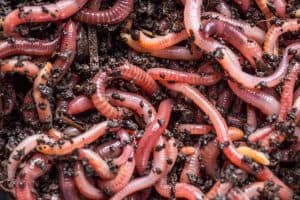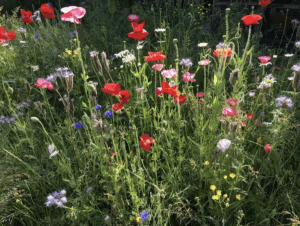Advice on all kinds of bees from Cathie at Cathie’s Gardening School, Squire’s Garden Centre at Secretts, Milford.
Regular readers will be aware that there are a couple of beehives at the gardening school with lovely local honey but not everyone is able to have a hive in their garden or are you?
Honey Bees
The honey bee is a social insect creating colonies in hives and other suitable places. We are all being encouraged to look after the bees but there are more types than you would imagine. I am always encouraging people to learn about beekeeping and run workshops annually. Honey bees, like their name suggests, make honey and if managed correctly we can share it with them. Apis melifera to give it the proper name is technically extinct in the wild in this country, although a few swarms and castes do escape and take up residence in chimneys and other awkward places. The Queen lasts for a few years and the bees cluster around her to keep her warm and get her through the winter. They are essential pollinators for our food crops and flowers for the rest of the year.
Bumble Bees
These are also social insects and also make honey for themselves to eat but not enough for us to have unfortunately! They tend to be much less aggressive than honey bees and a lot fluffier. Our true native is the buff tailed bumble bee but there are many others around. I have a hive with a buff-tailed bumble bee colony in my garden at home and they go in and out of a little flap door! There is also a red-tailed colony in the compost bin. The Queen only has her colony for one year and then it is abandoned in late Summer. They are also important pollinators.
Solitary Bees
Now here we get into the interesting bit for those of you who think it is not possible to keep bees!
In the teaching garden we have an array of insect houses and homes but the ones they like the best are the canes, hollow stems and chunks of wood with holes in, which are expensive to buy and so easy to make yourself.
Solitary bees come in many shapes and sizes so you need to provide holes to match this. I have watched them going in and out of the holes to try them for size and even fight with others over one that is suitable.
They then lay an egg in the hole and then plug it with soil or a piece of leaf. The new bee hatches out a few weeks later and the whole cycle is repeated.
Leaf Cutter Bees
Have you ever seen rose leaves and similar with perfect holes in them? This may seem to be a problem but it is a pleasure to behold. They particularly like rose leaves but I have also seen them on other plants and flying with a piece of leaf as big as they are to plug the holes where they have laid an egg. The cut is not to be confused with the munching caused by caterpillars, slugs and adult vine weevils. This is a work of art.
How to make a simple solitary bee house
There are many bee houses available to buy and bees would definitely need a huge mortgage to purchase one!
All they need is a hole big enough to fit in and find many of these in fences logs and even key holes!
If you have bamboo growing in your garden or plants with hollow stems or even just some old canes that have fallen apart, they are all useful. All you need is a plastic bottle with the top and bottom cut off and canes long enough to fit inside. Cut as many as you need to make a tight fit, tie some string around and hang it up! It really is that simple.
Want to know more?
August 28th is our second beekeeping workshop of the year but this time we are hoping to help you make some solitary bee homes to take away with you. There are also many other gardening workshops and horticultural courses as well as a whole list of other related services available to you. Please visit the Gardening School to find out more or drop me a line. All courses are suitable for beginners and experienced gardeners alike.




